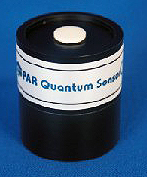RETIRED ›
This product is not available for new orders.
This product is not available for new orders.

| Services Available |
|---|
Overview
The SKP215 measures incident quanta between 400 and 700 nm. Light in this waveband is used for photosynthesis and is often referred to as ‘PAR’ (Photosynthetically Active Radiation).
Quanta below 400 nm are not generally used in photosynthesis and those above 700 nm have insufficient energy for the process. The number of quanta is related to sugar production and this measurement is now a standard referred to in scientific papers worldwide. Filtering in the sensor means that the measurement may be made accurately under any light source (sun, tungsten, fluorescent, xenon, etc.).
Read MoreBenefits and Features
- Modular mounting of components for easier field servicing and expansion
- On-line processing for maxima, average, flux density or total flux
- High-quality sensors for measurement of solar radiation and photosynthetically active radiation (PAR)
- No power required
- View data from multiple LoggerNet servers, Campbell Scientific data files, LNDB databases, HTTP dataloggers, and virtual data sources all in one RTMC project
- Direct connection to datalogger
- Low maintenance—extensive diagnostics let you know when maintenance is needed
Technical Description
Typical applications of the SKP215:
- Comparison of photosynthetic efficiencies of light sources differing in spectral emission
- Assessment of drift in radiation sources
- Design of lighting arrays in greenhouses and environmental chambers
- Predicting the efficiency of photosynthetic activity in plant growth, particularly under fluctuating light conditions such as plant canopies
- Choice of planting sites in gardens or indoor growth facilities
Images



Specifications
| Light Sensitivity | Sensitive to light between 400 nm and 700 nm wavelength |
| Preset Output | 1 mV per 100 μmolm-2s-1 |
| Cosine corrected head | (typical errors zero 0-70°, <10% 85-90°) |
| Operating Temperature | -35°C to +75°C |
| Absolute Accuracy | ±5% (typically <±3%) |
| Constructed from | Dupont `Delrin' sensor head fully sealed to IP68 |
| Blue-enhanced silicon photocell detector | with low fatigue characteristics |
| Calibrated in | units of µmolm-2s-1. Aµmol is the new name for the unit µEinstein, which is one millionth of Avagadro's number of quanta or photons. |
| Standard Cable Length | 3 m |
Resources and Links
Product Brochures
Manuals
Case Studies
Réunion Island: Tropical Volcanic Watershed
Tropical volcanic islands are biodiversity hotspots where the Critical Zone (CZ) remains poorly studied. In......read more
Tropical volcanic islands are biodiversity hotspots where the Critical Zone (CZ) remains poorly studied. In......read more
Norfolk Agricultural monitoring station with Konect
The John Innes Centre (JIC) is an independent, international centreof excellence in plant science and microbiology who......read more
The John Innes Centre (JIC) is an independent, international centreof excellence in plant science and microbiology who......read more
Privacy Policy Update
We've updated our privacy policy. Learn More
Cookie Consent
Update your cookie preferences. Update Cookie Preferences

